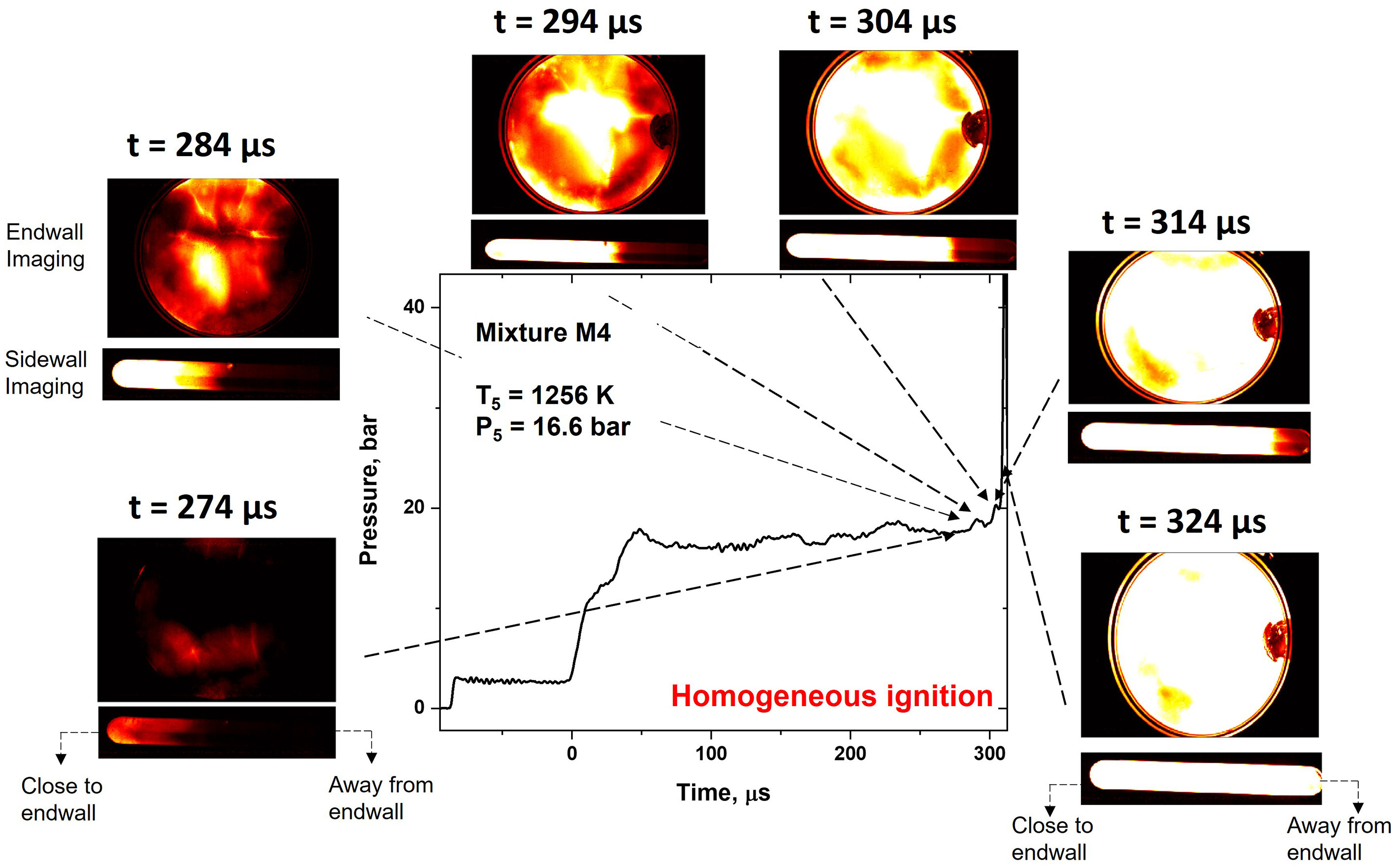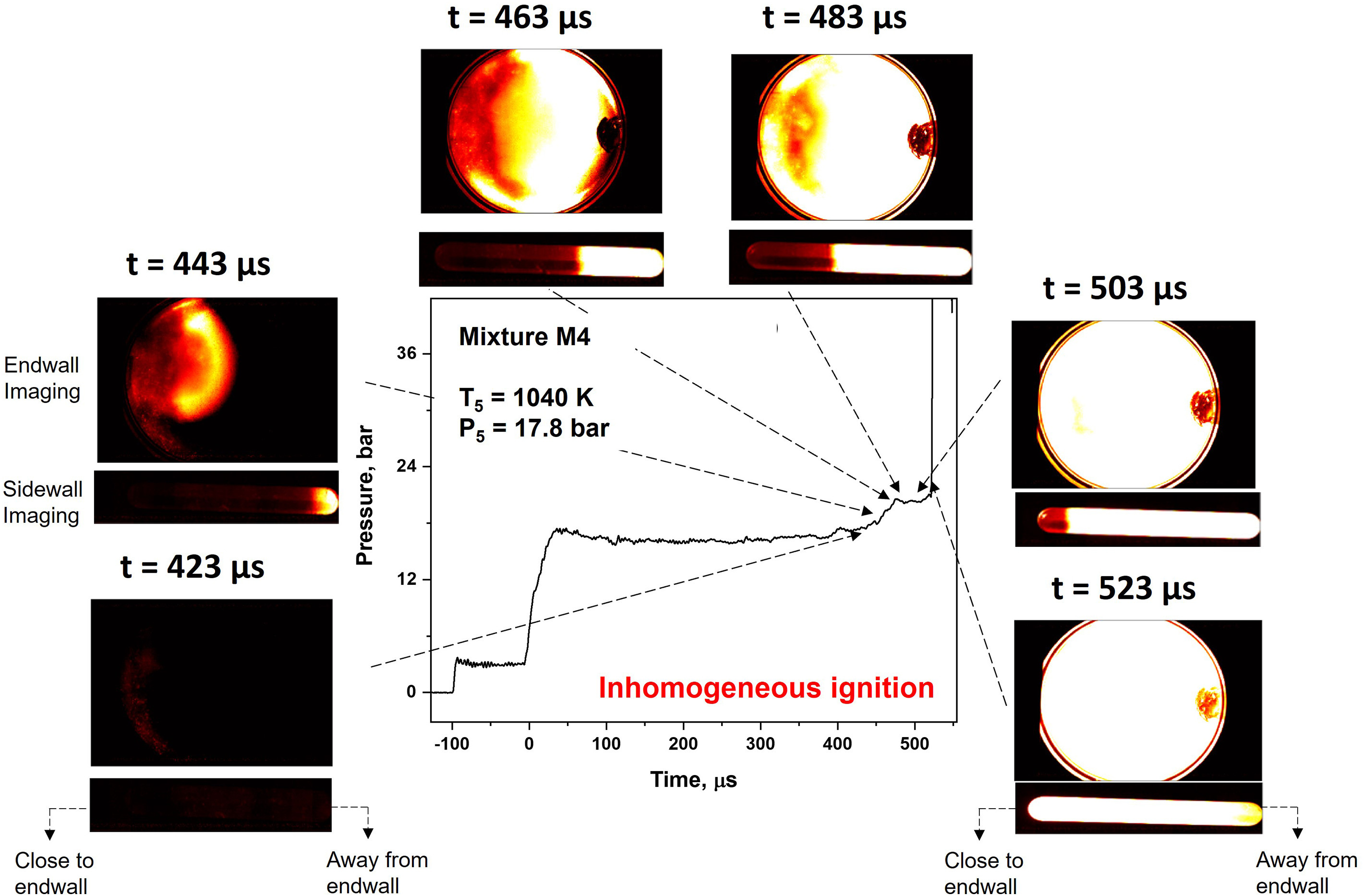

.png?sfvrsn=1b6bae1a_0) (FASTER)
(FASTER).png?sfvrsn=ac211bda_0)
Methane, a major component of natural gas, is increasingly being considered as an alternative to traditional fossil fuels due to its abundance and lower environmental impact. Methane combustion releases significantly less CO2 compared to other fossil fuels, making it an attractive option for energy generation and even space exploration, where it is considered as a potential rocket fuel.
Oxygen-enriched combustion, in particular, offers several advantages such as increased thermal efficiency, reduced NOx emissions, decreased fuel consumption, and improved carbon capture efficiency. However, comprehensive experimental data on oxygen-enriched methane ignition are scarce, which creates a need for detailed studies to validate and refine existing chemical kinetic models.
Experimental data on the ignition of oxygen-enriched mixtures are limited in literature. In this work, ignition delay times (IDTs) of various methane/oxygen mixtures diluted in argon/nitrogen were measured using a low- and a high-pressure shock tube over a temperature range of 1200 – 1700 K, three pressures of 1, 10, and 20 bar and an equivalence ratio range of 0.21 - 4. The oxygen mole fraction in the mixtures varied from 19% (‘air’) to 90.5%, and dilution levels from 71% to zero. The reported IDTs were extracted from pressure and OH∗ emission profiles. To the best of our knowledge, this is the first comprehensive IDT study on the effect of oxygen enrichment on methane ignition. High-speed imaging experiments were performed to determine the possible presence of non-ideal ignition in these unconventional mixtures. Measured IDTs were compared with the predictions of AramcoMech 3.0 model as well as with GRIMech 3.0 and NUIGMech 1.1 for few cases. Minor modifications were made to AramcoMech 3.0 resulting in improved predictions of ignition behavior in oxygen-enriched methane mixtures.
 High speed imaging of a homogeneous ignition as visualized from sidewall and endwall optical windows for mixture M4 at T5 = 1256 K and P5 = 16.6 bar.
High speed imaging of a homogeneous ignition as visualized from sidewall and endwall optical windows for mixture M4 at T5 = 1256 K and P5 = 16.6 bar.

High speed imaging of an inhomogeneous ignition for mixture M4 at T5 = 1040 K and P5 = 17.8 bar.
Oxygenated mixtures due to their higher reactivity also present additional concerns of non-ideal ignition in shock tube. To investigate this, high-speed imaging of the combustion process was performed. The imaging revealed temperature regimes exists where ideal ignition can be observed for oxygenated methane mixtures
Impact